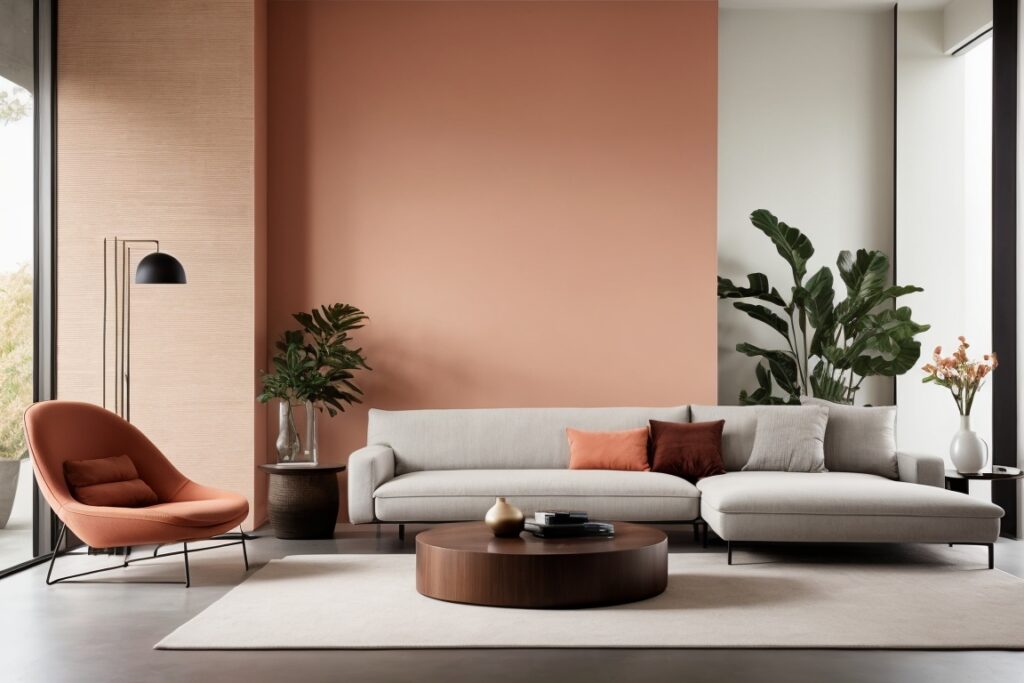In today’s fast-paced and cluttered world, the desire for simplicity and tranquility has never been more profound. Minimalism, a philosophy that embraces less is more, has emerged as a powerful antidote to the chaos of modern life. It’s not just about decluttering your physical space; it’s about cultivating a mindful approach to living, one that prioritizes quality over quantity, experiences over possessions, and conscious consumption over mindless acquisition.
Minimalist living extends to the very heart of our homes, transforming them into havens of serenity and functionality. Minimalist furniture, with its clean lines, uncluttered forms, and emphasis on quality, plays a pivotal role in creating these serene spaces. It’s not about having the least amount of furniture; it’s about having the right furniture, pieces that serve a purpose, enhance the aesthetic, and foster a sense of calm and harmony.
Embracing Minimalism: The Essence of Less
Minimalism is not about deprivation or austerity; it’s about liberation. It’s about shedding the excess, the clutter, and the distractions that weigh us down and prevent us from truly connecting with ourselves and our surroundings. It’s about creating a space that reflects our values, our priorities, and our authentic selves.
The core principles of minimalism are simple yet profound:
- Less is more: Quality over quantity, simplicity over complexity, functionality over excess.
- Intentionality: Every piece of furniture, every object, has a purpose, a reason for being in your space.
- Sustainability: Conscious consumption, valuing quality and durability over fleeting trends.
- Serene surroundings: Creating a space that promotes peace, tranquility, and well-being.
Minimalism is not a rigid set of rules; it’s a mindset, a way of life that allows us to curate our homes and our lives with intentionality. It’s about appreciating the beauty of simplicity, the power of negative space, and the freedom that comes from letting go of what doesn’t serve us.
Guiding Principles for Minimalist Furniture Selection
The essence of minimalist furniture lies in its ability to harmonize form, function, and aesthetics. By carefully selecting furniture pieces that embody these principles, we can create a cohesive and tranquil living space. Here are some guiding principles to consider when choosing minimalist furniture:
Quality over Quantity: Minimalism emphasizes quality over quantity, encouraging us to invest in fewer, well-made pieces that will stand the test of time. Prioritize furniture crafted from durable materials like solid wood, leather, and natural fibers. These materials exude elegance and sophistication, contributing to the overall minimalist aesthetic.
Clean Lines and Uncluttered Forms: Minimalist furniture is characterized by clean lines, uncluttered forms, and a lack of extraneous ornamentation. Opt for pieces with simple, geometric shapes that blend seamlessly into the space. Avoid furniture with excessive details, carvings, or embellishments, as these can disrupt the minimalist aesthetic.
Neutral Color Palettes: Neutral color palettes, such as whites, creams, beiges, and grays, play a crucial role in creating a harmonious and calming minimalist environment. These versatile colors provide a backdrop for pops of color or personal touches, while also promoting a sense of spaciousness and tranquility.
Room by Room: Curating Your Minimalist Haven
1. Living Room:

The living room is the heart of the home, and minimalist furniture can transform it into a haven of relaxation and comfort. Choose a sleek sofa that complements the room’s size and style. A statement chair or two can add visual interest and provide additional seating for guests. Complement the sofa with a minimalist coffee table that serves as a focal point, providing ample surface space for drinks, books, or decorative items.
2. Bedroom:

The bedroom is a haven for relaxation and renewal. Prioritize a minimalist bed frame that seamlessly integrates into the space. A nightstand with clean lines and a simple design is essential for placing essentials within reach. A minimalist dresser with ample storage options keeps belongings organized and clutter at bay.
3. Dining Room:

The dining room is a place for family gatherings and social gatherings. A simple and elegant dining table, paired with comfortable dining chairs, creates a minimalist dining experience. Choose a table size that accommodates your needs without overpowering the room. Avoid bulky decorations or excessive lighting, allowing the minimalist design of the furniture to shine.
4. Home Office:

A minimalist home office promotes productivity and focus. A functional desk with ample workspace is key. A comfortable chair that promotes good posture is essential for maintaining focus and preventing fatigue. Utilize storage solutions, such as shelves or drawers, to keep documents and office supplies organized.
Accessorizing with Intention: Minimalist Enhancements
While minimalist furniture emphasizes simplicity, carefully curated accessories can enhance the overall aesthetic and add personal touches. Exercise restraint when accessorizing to maintain a minimalist balance.
Natural Elements: Incorporate natural elements like plants, wood accents, and woven textiles to add warmth and texture. Plants purify the air and bring a touch of serenity, while wood accents and woven textiles provide organic elements that complement the minimalist aesthetic.
Strategic Lighting: Utilize lighting to create ambiance and highlight architectural details. Position lamps strategically to illuminate key areas, creating a sense of warmth and intimacy. Avoid excessive lighting that might disrupt the minimalist aesthetic.
Personal Touches: Introduce personal touches sparingly to avoid clutter and maintain the minimalist vibe. A treasured artwork, a meaningful family heirloom, or a carefully curated collection of books can add depth and personality to the space.
Conclusion: Embracing Minimalist Living
Minimalist living is a journey of intentionality, one that invites us to simplify our lives, curate our surroundings with care, and appreciate the beauty of simplicity. Minimalist furniture serves as a foundation for this transformation, providing spaces that foster tranquility, clarity, and well-being.
By embracing minimalist principles, we not only create serene living spaces but also cultivate a mindful approach to life. We learn to appreciate what we truly value, to let go of excess, and to live with intention. We rediscover the joy of simplicity, the freedom that comes from shedding clutter, and the power of creating a home that reflects our authentic selves.
Embark on a minimalist journey and transform your home into a haven of serenity, a place where you can truly connect with yourself, your loved ones, and the world around you. Embrace the beauty of less and discover the transformative power of minimalism.
FAQs
1: What are the key characteristics of minimalist furniture?
Minimalist furniture is characterized by clean lines, simple forms, and a lack of extraneous ornamentation. It emphasizes functionality and quality over quantity, using natural materials and neutral color palettes to create a harmonious and calming aesthetic.
2: What are the benefits of using minimalist furniture?
Minimalist furniture offers several benefits, including:
- Creating a sense of spaciousness: Minimalist furniture, by its very nature, reduces clutter and visual distractions, making a space feel more open and airy.
- Reducing stress: A clutter-free and calming environment can significantly reduce stress levels and promote a sense of tranquility.
- Simplifying daily life: Minimalist furniture eliminates decision fatigue and simplifies daily tasks, making it easier to find what you need and maintain a clean and organized space.
- Enhancing focus and productivity: A minimalist workspace, free from distractions, can enhance focus and productivity, allowing you to work more effectively.
3: How do I choose minimalist furniture for my home?
When selecting minimalist furniture, consider these guiding principles:
- Quality over quantity: Invest in fewer, well-made pieces that will stand the test of time.
- Clean lines and uncluttered forms: Opt for furniture with simple, geometric shapes and avoid excessive details.
- Neutral color palettes: Choose furniture in neutral colors like white, cream, beige, or gray to create a harmonious and calming ambiance.
4: What are some tips for accessorizing a minimalist home?
Accessorize with intention and restraint to maintain the minimalist aesthetic:
- Incorporate natural elements: Add warmth and texture with plants, wood accents, and woven textiles.
- Utilize strategic lighting: Use lighting to create ambiance and highlight architectural details.
- Introduce personal touches sparingly: Select a few meaningful items that reflect your personality and style.
5: How can I transform my entire home into a minimalist haven?
Adopting minimalism extends beyond furniture selection; it’s a lifestyle choice:
- Declutter regularly: Regularly pare down your possessions, keeping only items that truly serve you or bring you joy.
- Embrace negative space: Allow for empty space in your rooms to create a sense of calm and spaciousness.
- Practice mindful consumption: Make conscious purchasing decisions, prioritizing quality over quantity and sustainable materials.







